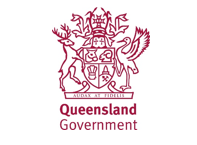The value of riverine recovery on a diverse environment
The catastrophic Queensland floods of 2021-22 left a heavy toll across the state, damaging road infrastructure, residential structures, community assets, and the wider natural environment.
When it comes to roads and bridges, houses and playgrounds, these reconstruction needs are normally quite clearly defined. For the environment though, rehabilitation and recovery is often more complex.
This is particularly true for riverine systems and waterways, which are among the most fragile networks in the natural world.
River health plays a crucial role in supporting some of Queensland’s precious marine areas including the Southern Great Barrier Reef and Moreton Bay
These areas contain important, delicate in-stream ecosystems. Unfortunately, the impacts they experienced during the 2021-22 disaster season were severe.
As part of a more than $2.1 billion assistance package delivered in response to the flooding, the Australian and Queensland Governments developed the $32.75 million Riverine Recovery Program to invest in improved catchment conditions.
Riverine restoration and rehabilitation seeks to restore the natural channel properties in waterways.
Doing this can reduce downstream flood risk and increase water storage by allowing the river to flow onto its natural floodplain.
It can also improve water quality, habitat diversity, sustainment of low flows, and enhance landscape appeal.
Stage 1 of the Riverine Recovery Program saw eligible groups carry out investigation works to better understand the damage caused to their local waterways, including erosion and displaced vegetation, and the works needed to rectify the damage.
Stage 2 of the program is now open for applications.
Using the knowledge gained during Stage 1, the second part of the program will enable natural resource management bodies, bulk water supply utilities and First Nations corporations to rejuvenate some of Queensland’s most iconic natural areas.
Funding is available for recovery works including bank repairs and erosion stabilisation, and native vegetation planting to restore natural ecosystem functions.
Through these locally led recovery actions, the Riverine Recovery Program is strengthening Queensland’s environment against future natural disasters and protecting its biodiversity for generations to come.
Media statement

(External link to: https://statements.qld.gov.au/statements/96919)